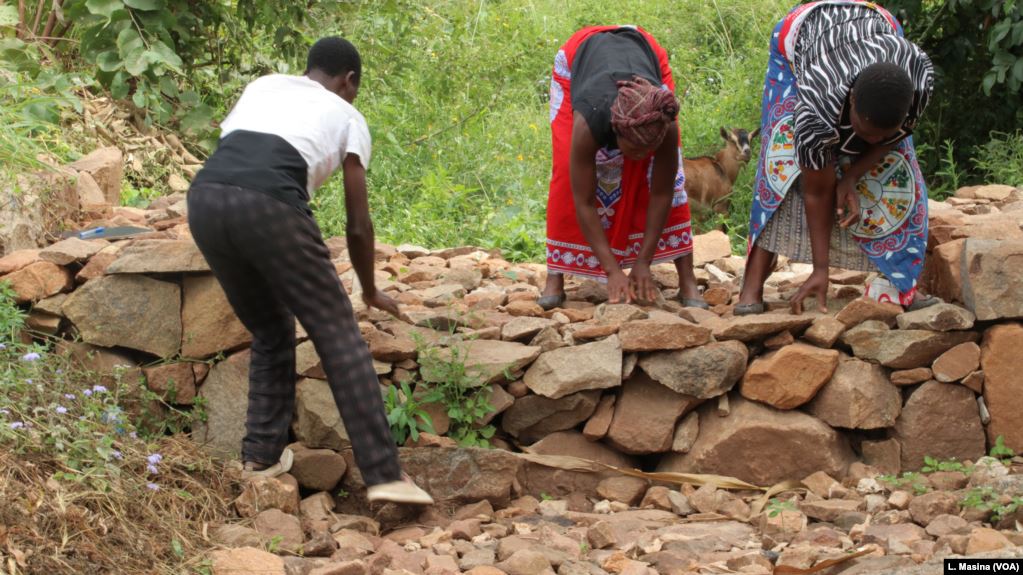
May 15,2019
Flooding caused by Cyclone Idai affected a million people across Mozambique, Zimbabwe and Malawi in March, and forced hundreds of thousands out of their homes. But in Malawi, certain communities were spared because of flood mitigation projects sponsored by the World Food Program.
Residents of Mwambananji village, in the Zomba district of southeast Malawi, were among millions of people hard hit by the El Nino weather phenomenon in 2015, which caused drought and floods.
The floods damaged houses and washed away thousands of crop fields, leaving 6.7 million people in dire need of food assistance. This is nearly half of Malawi's population.
Kenneth Scott was one of the affected villagers. He said “they were heavily affected by the floods which completely left their houses in water because of the water coming from the nearby rivers.”
But this year, Scott was not affected by the floods caused by Cyclone Idai, which killed 60 people and displaced nearly 90,000 others in the country’s 15 districts, including Zomba.
This is largely because of a World Food Program-funded project designed to mitigate the impact on communities living in flood-prone areas.
The program, started four years ago, is helping more than 10,000 households in Blantyre, Balaka and Zomba districts.
Kiganzi Nyakato heads the WFP sub-office in southern Malawi.
“So, what we do is that we work with the communities to see how we can stabilize their food production. So its farming techniques or the type of seeds they are using, and also we work with them to have vegetable gardens,” said Nyakato.
The program also requires beneficiaries to work in groups to dig deep trenches and construct concrete blockades across rivers, trapping water runoffs during flooding.
Scott said the construction projects paid off when Cyclone Idai struck in March.
He said there were heavy rains this year, which would, "have put our lives at risk. Maybe you would not have found us here. But the deep trenches which we dug helped trap all the water that would have damaged and washed away crops. Because of this, only a small amount of water reached the homes.”
Scott, however, said the challenge is that poverty is forcing some people to vandalize the blockades and cut down trees that were planted to contain soil erosion.
He said, “We wish that residents who live in surrounding areas could be financially empowered through loans in order to start some businesses that would help put a stop to the vandalism.”
In the meantime, the WFP continues to provide food and non-food items to flood survivors in the affected areas. It plans to extend the flood mitigation program to more than 40,000 households by 2020.
Photo:Beneficiaries of WFP's Resilent Program in Zomba, Malawi, construct blockades across rivers to help trap water runoffs during flooding.
